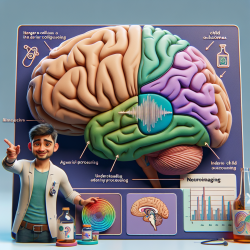Introduction
The COVID-19 pandemic has had a profound impact on the mental health of children and adolescents worldwide. As practitioners dedicated to improving outcomes for youth, it is crucial to understand the factors contributing to increased anxiety and depression during such unprecedented times. A recent study, "Changes in Internalizing Symptoms During the COVID-19 Pandemic in a Transdiagnostic Sample of Youth: Exploring Mediators and Predictors," offers valuable insights into these dynamics.
Understanding the Research
The study explored changes in anxiety and depression among youth aged 8-18 during the pandemic, highlighting pandemic-related stress as a significant mediator. It also examined threat processing biases as predictors of increased anxiety. The findings indicate that both anxiety and depression significantly increased during the pandemic, with symptom changes partially mediated by pandemic stress and worries.
Key Takeaways for Practitioners
For practitioners, these findings underscore the importance of recognizing the multifaceted nature of pandemic-related stress and its impact on youth mental health. Here are actionable insights to consider:
- Holistic Assessment: Conduct comprehensive assessments that consider both psychological and environmental stressors impacting youth.
- Focus on Stress Management: Implement interventions that address pandemic-related stressors, such as routine disruptions and health worries.
- Monitor Threat Processing: Be aware of threat processing biases that may predispose youth to increased anxiety, and incorporate strategies to mitigate these biases.
Encouraging Further Research
The study's findings also highlight the need for continued research into the long-term impacts of the pandemic on youth mental health. Practitioners are encouraged to contribute to this body of knowledge by:
- Participating in Longitudinal Studies: Engage in research efforts that track mental health outcomes over time to better understand the pandemic's lasting effects.
- Exploring Neurocognitive Factors: Investigate the role of neurocognitive factors in stress reactivity and anxiety to develop targeted interventions.
- Sharing Insights: Collaborate with peers to share findings and best practices for supporting youth during and beyond the pandemic.
Conclusion
As we navigate the ongoing challenges posed by the COVID-19 pandemic, it is imperative for practitioners to leverage research findings to inform their practice. By understanding the mediating role of stress and the impact of threat processing biases, we can better support the mental health of children and adolescents.
To read the original research paper, please follow this link: Changes in Internalizing Symptoms During the COVID-19 Pandemic in a Transdiagnostic Sample of Youth: Exploring Mediators and Predictors.










